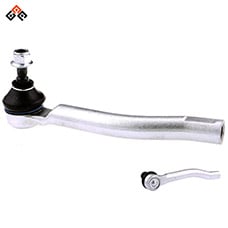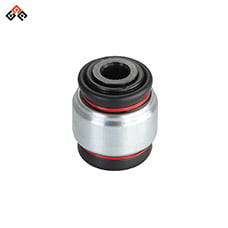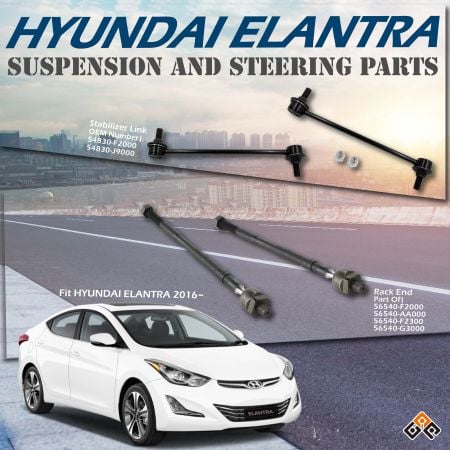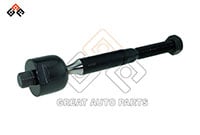Steering Drag Links and Tie Rod Ends Impacts for Your Nissan
Your Nissan vehicle’s steering system, it’s not just about turning the wheel. Each part, from the steering gear to the tires, plays a role in moving you safely where you need to go, and at the heart of it? Steering drag links and tie rod ends. These components may not seem flashy, but they’re critical for smooth control, precise handling, and reliable performance, no matter the vehicle type.
What is a Steering Drag Link
A steering drag link is essentially a connector, a kind of bridge in your steering system. It links the steering gear (the part where your steering wheel commands begin) to the steering arm at the wheels. The drag link’s job is simple but vital: It transfers your wheel movement directly to the wheels, converting that steering input into a clear, controlled direction.
These links can be made from forged steel, often in solid or adjustable forms, and they need to be tough. For heavy-duty trucks or off-road vehicles, a strong, durable drag link is non-negotiable. Some are designed to handle high loads with a non-adjustable, solid body, while others allow for fine adjustments to improve steering accuracy.
The Role of the Tie Rod End in Vehicle Steering
Now, the tie rod end. This part? It’s all about precision. The tie rod end connects the steering gear to the wheels and fine-tunes their angle, allowing the wheels to pivot smoothly. It keeps your wheels aligned and allows them to respond accurately to even the smallest steering input.
Unlike drag links, tie rod ends have ball joints for flexibility. These joints enable the wheels to turn while absorbing the bumps, twists, and constant adjustments of daily driving. Tie rod ends are typically smaller than drag links, but they play a critical role in ensuring your vehicle responds predictably and safely to your control.
How Steering Drag Links and Tie Rod Ends Work Together in Different Vehicle Types
In any vehicle, from sedans to 18-wheelers, steering drag links and tie rod ends work together to create a precise, responsive steering system, but they do it differently depending on the type of vehicle.
| Vehicle Type | Role of Steering Drag Link | Role of Tie Rod End |
| Passenger Vehicles (e.g., Sedans, SUVs) | Often eliminated in rack-and-pinion systems, but in SUVs with drag links, they enhance stability and handling at high speeds. | Directly connects steering system to wheels in rack-and-pinion setups; provides smooth handling and alignment in vehicles without drag links. |
| Heavy-Duty Trucks | Essential in pitman-arm-based steering systems; high-strength drag link transfers steering motion to wheels for reliable control under heavy loads. | Allows fine adjustments to maintain precise wheel alignment, especially critical under heavy loads. |
| Off-Road and Agricultural Vehicles | Designed for high durability in rugged environments; handles extreme angles, vibration, and terrain without compromising. | Provides flexibility for wheel pivoting on rough terrain; built from robust materials to handle shocks and uneven surfaces. |
| Commercial Buses and Fleet Vehicles | Built for long-term durability, maintaining alignment under heavy, frequent use. Crucial for long-haul reliability and consistent steering response. | Enables alignment precision, preventing wear and ensuring stability across extended, high-mileage use. |
Key Differences Between Steering Drag Links and Tie Rod Ends
While they work together, drag links and tie rod ends serve different purposes, and understanding these distinctions can help you grasp why they’re both essential.
| Aspect | Steering Drag Link | Tie Rod End |
| Function | Primarily transfers movement from the steering wheel to the wheels. | Fine-tunes wheel alignment, ensuring they respond to subtle adjustments and stay aligned. |
| Design and Placement | Typically a straight or slightly curved rod located between the steering gear and wheels. | Smaller, often ball-jointed, positioned between the drag link (or directly on the steering gear) and the wheel assemblies. |
| Maintenance Needs | Takes on heavy load transfer, requiring less frequent adjustments but needs integrity checks. | Prone to wear due to constant pivoting, requiring regular inspection and greasing for optimal performance. |
Recognizing Wear and Maintenance Tips for Steering Components
Signs of wear on drag links or tie rod ends can start subtle but become serious over time. Loose steering, uneven tire wear, or a slight “play” in the wheel can all be early indicators that one of these parts may need attention. Regular maintenance is your best defense.
- Signs of Wear: Listen for clunks or rattles, notice any uneven tire wear, or if the steering feels loose or unresponsive. These can be signs of worn tie rod ends or a compromised drag link.
- Maintenance Checklist: Regularly inspect these parts for play, especially on tie rod ends where flexibility and alignment are key. Grease pivot points as recommended, and keep an eye on seals or ball joints for leaks or cracks.
- Professional Advice: For heavy-duty vehicles, regular professional checks are recommended. If you notice any signs of wear, a mechanic can perform alignment checks and torque tests to ensure everything’s in top shape.
The Impact of Worn Drag Links and Tie Rod Ends on Vehicle Alignment and Safety
Worn steering components, particularly drag links and tie rod ends, can lead to significant alignment and safety issues in any vehicle. Here’s how wear affects these essential parts and what signs to look for:
How Worn Drag Links and Tie Rod Ends Affect Alignment and Handling
- Wheel Misalignment: As these components wear out, they begin to loosen, causing your wheels to fall out of alignment. Misaligned wheels can lead to uneven tire wear, pulling to one side, and increased fuel consumption due to added resistance.
- Reduced Steering Precision: A worn drag link can cause vague or “loose” steering, reducing the precision with which the vehicle responds to steering inputs. This impacts handling, especially at high speeds or on rough terrain.
- Safety Concerns: Steering components that are too worn can compromise vehicle stability. Sudden jerks or pulling to one side become more common, increasing the likelihood of accidents. Furthermore, excessive wear on these parts can eventually lead to component failure, creating a serious risk.
Heavy-Duty Steering Components: What Makes Drag Links and Tie Rod Ends Durable
Drag links and tie rod ends in heavy-duty applications need more than just strength; they need resilience. Most are made from forged steel, designed to withstand extreme loads and conditions. Some drag links come with a greaseable socket design, allowing for easy maintenance and extending the part’s life by flushing contaminants. For heavy-duty use, solid, one-piece drag links are preferred to prevent any weak points.
These components work together to ensure that the driver's input is effectively transmitted to the wheels, allowing for precise and reliable vehicle control.
Choosing the Right Tie Rod Ends for Nissan in Great Auto Parts
When it comes to high-quality steering and suspension components, Great Auto Parts offers robust, precision-engineered drag links and tie rod ends designed for durability and performance.
Here’s what sets our products apart:
Key Features and Advantages
- High-Strength Forged Steel Construction: Manufactured using cold-forged or hot-forged high-strength steel, our tie rod ends provide exceptional durability, resisting wear under heavy loads and tough conditions.
- Advanced Anti-Rust Protection: Each tie rod end undergoes a specialized surface treatment for superior corrosion resistance, offering robust anti-rust protection that extends the part’s lifespan and maintains its appearance over time.
- Precision Tracking with Laser Etching: Laser-etched tracking batch codes on every component enable precision tracking and quality control, ensuring that each part meets our high standards and provides reliable performance.
- Exceeds OE Strength Standards: Built to perform as well as, if not better than, original equipment, our tie rod ends feature pull or push-out strength that matches or surpasses OE standards, delivering reliability you can trust on the road.
- Perfect OE Fit with Easy Installation: Designed to replace original equipment directly, our tie rod ends eliminate fitting issues. They install smoothly, allowing mechanics and DIY enthusiasts alike to enjoy a hassle-free replacement.
- Flexible Order Quantities: With a minimum order quantity as low as 30 pieces, we support flexibility for both large and small-scale needs, making our tie rod ends accessible for individual replacements, workshops, or fleet maintenance.
Great Auto Parts provides reliable, precision-engineered tie rod ends for Nissan vehicles, ensuring outstanding performance, durability, and anti-corrosion protection. Whether you're looking for a single part or a bulk order, our Nissan tie rod ends offer unmatched value and quality, ensuring you get the best every time.






